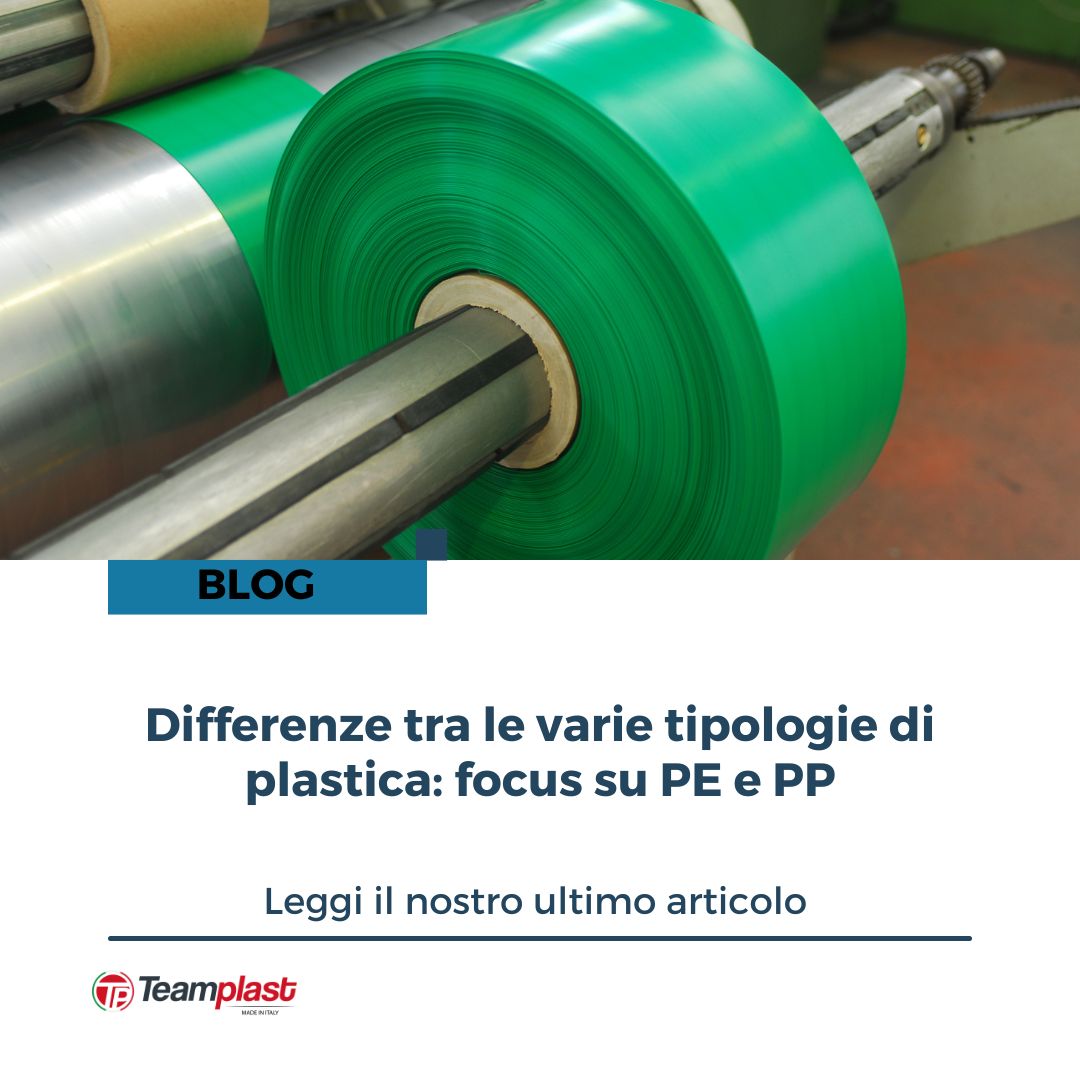In the packaging sector, plastics play a fundamental role thanks to their versatility, resistance and lightness. There are different types of plastics, each with unique characteristics that make them suitable for specific uses. In this article, we will explore the main plastics used in the industry, focusing on Polyethylene (PE) and Polypropylene (PP), two key materials for flexible packaging, in which Teamplast stands out as a reference company.
Polyethylene (PE)
Polyethylene is one of the most used plastics in the world due to its versatility. It is divided
mainly into two categories:
- Low Density Polyethylene (LDPE): Characterized by a more branched molecular structure, it is flexible, transparent and resistant to impacts. LDPE is ideal for applications such as films, bags, coatings and flexible packaging. Its high elasticity makes it perfect for protecting products from impacts and abrasions during transport.
- High Density Polyethylene (HDPE): This material is stiffer and stronger than LDPE. It is used in applications such as thicker bags and food containers, due to its ability to provide a more robust protective barrier that is resistant to moisture and UV rays.
PE is widely chosen in the flexible packaging industry for its lightness, ease of processing and excellent quality-price ratio. Not only that, both LDPE and HDPE are also an environmentally sustainable choice, as they can be recycled infinitely. Some of the products that Teamplast makes in Polyethylene are for example the printed shoppers, the neutral or colored coils, cable ties And bag covers for the biomedical sector.
Polypropylene (PP)
Polypropylene is another widely used plastic in the packaging industry, with properties that distinguish it from Polyethylene.
- PP Homopolymer: This type of PP is more rigid and is mainly used in plastic molding (productions that Teamplast does not perform), i.e. in the production of articles for applications where greater mechanical resistance is required, such as closures, hinges and bottle caps. It is also heat resistant, which makes it suitable for use in microwave containers.
- PP Copolymer: Compared to homopolymer PP, this variant is more flexible and transparent and offers greater protection for various food products. It is used for applications such as flexible packaging films and to contain items that must also stand out well inside the packaging.
PP is chosen for flexible packaging due to its high clarity, heat resistance and ability to retain its shape, making it ideal for food packaging and other products requiring optimum protection.
In Polypropylene Teamplast makes for example printed food bags, reels, neutral envelopes intended for various sectors.
Comparison between PE and PP
Although Polyethylene and Polypropylene are both thermoplastics, they have key differences that determine their specific uses:
- Flexibility: PE, especially LDPE, is more flexible and softer than PP, making it ideal for applications where elasticity is required. PP, on the other hand, is stiffer and holds its shape better.
- Heat resistance: PP offers greater barrier and high temperature resistance than PE, making it suitable for applications requiring thermal resistance, such as microwave food containers.
- TransparencyPP is generally more transparent than PE, a feature appreciated for packaging that requires visibility of the packaged product.
- Protection: PP is able to better protect the packaged product from high temperatures and oxygen: for this reason it guarantees better preservation of foods, even fatty ones. PE, being a more porous material, lets more air pass through, therefore it is more suitable (at the level of food products) for the packaging of dry products.
Teamplast: decades of experience in Flexible Packaging in PE and PP
In an ever-changing market, choosing the right material is essential to ensure that products are protected, preserved and presented in the best possible way. Teamplast has been working in this sector for over 40 years and over time has developed a deep knowledge of these materials.
The packaging solutions offered by Teamplast meet different needs, from flexible films to printed bags for the food sector, to resistant bags for logistics. The company stands out for its ability to create customized, efficient and quality packaging, always ensuring optimal protection of the products.
Choosing Teamplast means relying on a partner with experience and competence, able to offer
flexible and sustainable solutions with the utmost respect for the environment, thanks to the use of recyclable raw materials and cutting-edge technologies.





